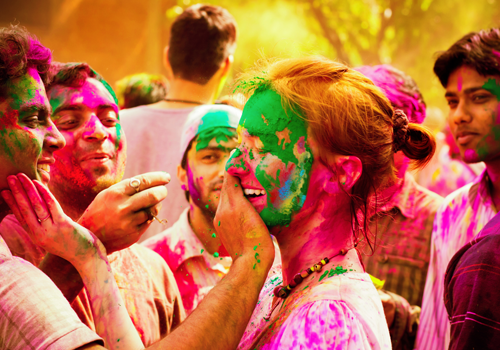"Bura na mano, Holi hai!"
Every Holi brings back fresh memories of these gleeful words and pranks played on friends, relatives and neighbours. As we gear up to play Holi in this colourful and lively month of March, here are some interesting legends associated with this Festival of Colours.
Holi celebrates the arrival of spring, Lord Krishna and the triumph of good over evil in the legend of Holika and Prahalad. The festival is synonymous with boisterous merrymaking and a riot of colours – either as powder or water with the 'pichkaari'. Dyed water is shot or thrown from buckets or thrown as balloons at one another. It is a sanctioned anarchy and no one is spared!

It is said that Lord Krishna is associated with the festival as he often teased the Gopis with water and dry colours. According to another legend, Krishna was jealous of Radha's fair complexion as he himself was dark. He told this to his mother Yashoda, who teasingly asked him to colour Radha's face and see her complexion change. Because of this association with Lord Krishna, Holi is played with great fervour in Vrindavan and Mathura, two cities in the Northern part of India that is affiliated to Lord Krishna. Another legend says that the infant Krishna killed the demonic 'Putna' on the same day and Rasleela was celebrated by gopiyas in remembrance of this miracle.
Lord Krishna played with colours to celebrate the victory of good over evil. It is one of the few times when social restrictions that are usually associated with status, caste, sex and age are relaxed. Holi is one festival where it is impossible to tell who is rich and poor once covered in colour. Barriers between men and women, young and old are broken down by the bright colours of Holi.
During the olden days, the 'gulal' colours were made at home using flowers of 'Palash' known as the 'Flame of the Forest'. The flowers, once plucked, were sundried and then ground to a fine dust. Mixed in water, the powdered dust would turn into a brilliant hue of saffron-red. This saffron-red pigment along with the coloured powdered talc called 'aabir' were the main colours used for Holi. These days, the festival has changed with people painting the town red, green, yellow, purple, orange, pink and every colour you could possibly imagine!